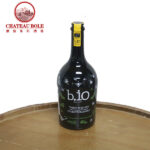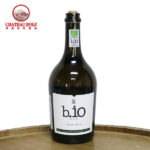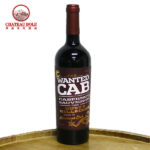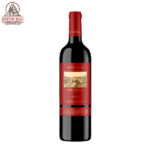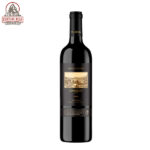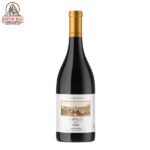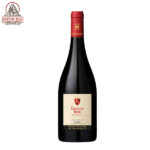Sicily
Sicily is Italy’s southernmost region, and the largest island in the Mediterranean Sea.
To learn more about Sicily, please read on. If you’re interested to find more wines from this region, then scroll to the bottom of the page.
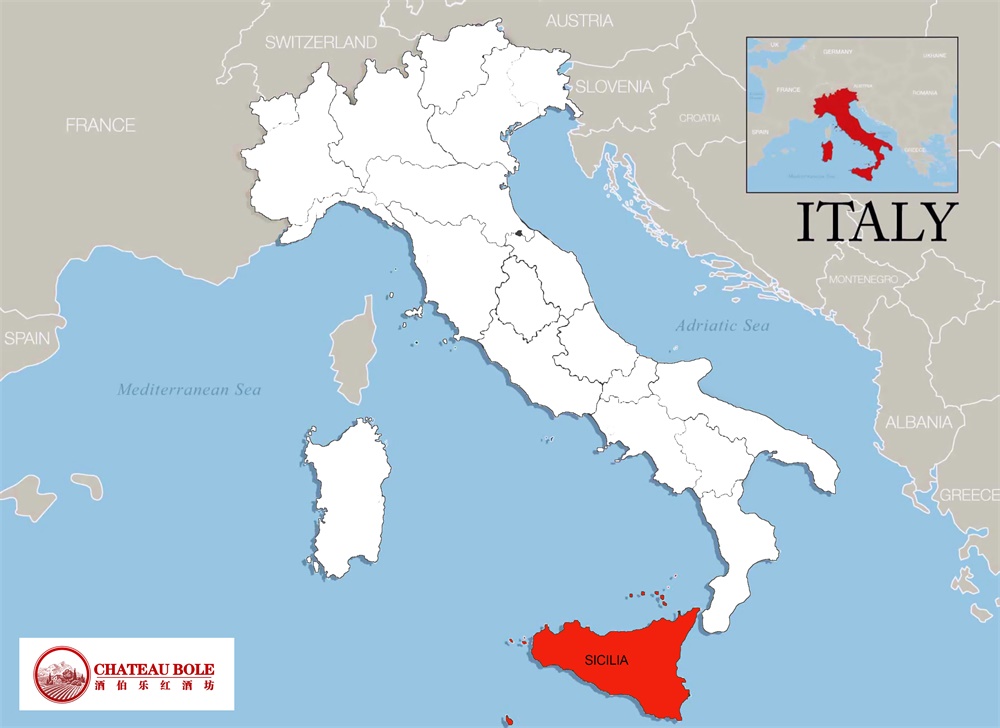
For more than 2500 years Sicily (Sicilia in Italian) has been a significant center of Mediterranean viniculture, although the reputation and style of its wines has changed significantly over that time. Although once famous for sweet Muscats (see Pantelleria), and later fortified Marsala, the island’s best known wines are now its dry table wines produced under the regional IGT title, Terre Siciliane.
Blessed with consistently bright sunshine and reliably moderate rainfall, Sicily’s classic Mediterranean climate is ideally suited to the production of wine grapes The warm, dry climate means that mildews and rots are kept to a minimum, particularly in well-ventilated areas which benefit from coastal breezes. This low disease pressure means that chemical sprays are hardly needed, so much Sicilian wine is produced from organic grapes. Alongside grapes and wine, Sicily’s key exports are the cereals, olives and citrus fruits on which its economy has been based for centuries.
Ironically, the island’s near-perfect vine-growing conditions played a key role in the downfall of Sicilian wine in the late 20th Century. Reliable sunshine and low disease pressure have always made it easy for Sicilian vine growers to push their vineyards into generating high yields, but when the Italian government offered subsidies for ‘upgrading’ to higher-yielding vine management techniques, the temptation was too much to refuse. Many thousands of acres of low-yielding bush vines were rapidly converted to high-yielding tendone (pergola) or guyot (cane-pruning) training methods. These higher yields naturally led to imbalanced, flavour-lacking wines – a drop in quality which was soon mirrored by a drop in consumer confidence. The market was soon awash with low-quality, low-priced Sicilian wine. Happily, the movement to reverse this reputation is well underway, and Sicily is now one of Italy’s most promising and interesting wine regions.
Sicily’s soils, and the mountains from which they came, are of particular interest when it comes to studying the island’s viticulture. Mount Etna, the towering stratovolcano, dominates the island’s eastern skyline, and is responsible for the mineral-rich, dark soils which characterise the Etna DOC vineyards. Vines are now being planted higher up on the volcanic slopes, to capitalize on the cooler air and richer soils there. Fifty miles (80km) south, the Iblei Mountains stake their place in eastern Sicilian wine. On their lower slopes and the coastal plains below them, the DOCs of Siracusa, Noto, Eloro and Vittoria sweep from east to west, forming a crescent which mirrors the arcing coastline. In western Sicily, the volcanic hills are less individually dramatic but just as influential to the soil types. The western fifth of the island is covered by the Marsala DOC, and also within this area fall the DOCs Alcamo, Contessa Entellina, Delia Nivolelli, Erice, Menfi, Monreale, Salaparuta, Santa Margherita di Belice and Sciacca. Also of note is the small Sambuca di Sicilia DOC, whose wines are not to be confused with Sambuca, the potent anise liqueur.
The key grape varieties used in Sicilian viticulture are a combination of ‘native’ varieties (those historically cultivated on the island) and newer, more fashionable imports. Nero d’Avola and Catarratto are the most important natives, occupying 16% and 32% of Sicily’s vineyard area respectively in 2008. The sheer volume of Catarratto juice created each year means much of it is shipped to cooler Italian wine regions, where it is used to increase the body and weight of otherwise thin, over-acidic wines. A large proportion of what remains on the island is used to make Marsala, for which it is joined by the white varieties Grillo and Inzolia. Although less famous than Marsala, another sweet wine of significance to the island is Moscato di Pantelleria, the Moscato grape in question being Muscat of Alexandria.
Other grape varieties of note are Grecanico, Alicante (Grenache), Perricone, Nocera, and Frappato, the latter being the key ingredient in Sicily’s only DOCG wine Cerasuolo di Vittoria. Sibling varieties Nerello Mascalese and Nerello Cappuccio are also small players in terms of volume, but are of vital importance around Mount Etna. Syrah has been brought here from its home in southern France, where hot summer sunshine and sandy, rocky soils are also key components of the terroir. The robust red Rhone Valley variety shows every sign of adapting well to the Sicilian heat, and certainly better than Chardonnay, which is less able to produce balanced wines here. Trebbiano, the ubiquitous, high-yielding white variety found all around Italy, is also present in the wines of Sicily, although it has no role of particular distinction among them.
The island’s topography has affected more than just how, and where, Sicilian wines are created; it has also had a significant impact on the way commerce and customs have developed on the island. In the late Middle Ages Palermo was one of the largest city populations in Europe, and had a correspondingly voracious wine appetite. Despite large quantities of wine being made in the east of Sicily, Palermo’s wine supplies came as much from Campania and Lazio as they did from the other end of the island, so mountainous is the landscape surrounding the port city. Given the frequent contact Palermo had with the central western coast of Italy, and the proximity of Messina to southern Italy (it is separated from southern Calabria by the Strait of Messina, just two miles wide), these two key Sicilian cities were more influenced by the mainland at this time than they were by one another. And while Palermo was importing Italian wines, Messina was actually exporting eastern Sicilian wines to Africa and the eastern Mediterranean. Modern transportation and communication technologies mean that Sicily’s dramatic, volcanic landscape has less of an impact on the region’s social and cultural structures today. They remain, however, a vital part of its viticulture and winemaking, and may prove to be its unique selling point in the modern wine world.
Showing all 9 results

